TABLE 15-5
What are the factors that determine the acceleration time (in sec.) from 0 to 60 miles per hour of a car? Data on the following variables for 171 different vehicle models were collected:
Accel Time: Acceleration time in sec.
Cargo Vol: Cargo volume in cu. ft.
HP: Horsepower
MPG: Miles per gallon
SUV: 1 if the vehicle model is an SUV with Coupe as the base when SUV and Sedan are both 0
Sedan: 1 if the vehicle model is a sedan with Coupe as the base when SUV and Sedan are both 0
The regression results using acceleration time as the dependent variable and the remaining variables as the independent variables are presented below.
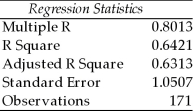 ANOVA
ANOVA

 The various residual plots are as shown below.
The various residual plots are as shown below.
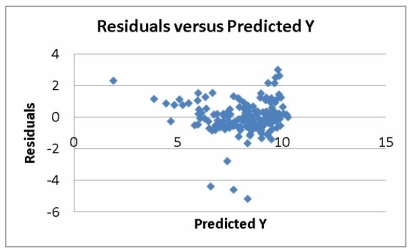
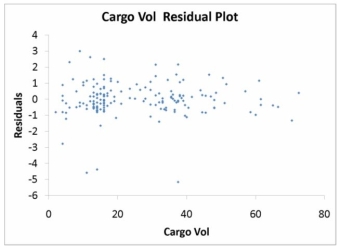
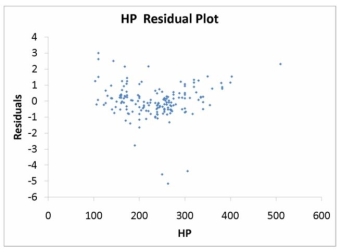
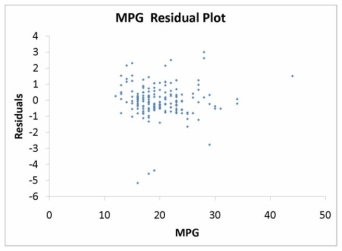
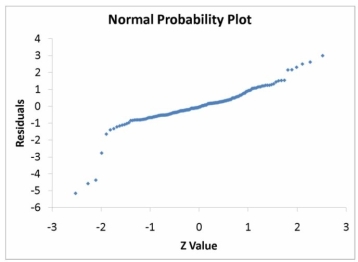 The coefficient of partial determination (
The coefficient of partial determination (  ) of each of the 5 predictors are, respectively, 0.0380, 0.4376, 0.0248, 0.0188, and 0.0312.
) of each of the 5 predictors are, respectively, 0.0380, 0.4376, 0.0248, 0.0188, and 0.0312.
The coefficient of multiple determination for the regression model using each of the 5 variables as the dependent variable and all other X variables as independent variables (  ) are, respectively, 0.7461, 0.5676, 0.6764, 0.8582, 0.6632.
) are, respectively, 0.7461, 0.5676, 0.6764, 0.8582, 0.6632.
-Referring to Table 15-5, what is the correct interpretation for the estimated coefficient for Sedan?
Definitions:
Est. Cost of Goods Sold
An estimated figure representing the cost directly associated with the production of the goods sold by a company.
Selling Price
The amount of money a seller charges for a product or service.
Credit Sales
Transactions where goods or services are sold and payment is delayed, typically recorded as accounts receivable.
Required Production
The quantity of products a company needs to produce to meet its sales goals and inventory levels.
Q3: Referring to Table 14-9, if variables that
Q6: The squared difference between the observed and
Q12: A regression diagnostic tool used to study
Q17: To assess the adequacy of a forecasting
Q36: In a multiple regression model, which of
Q40: Referring to Table 12-7, the decision made
Q65: Referring to Table 16-8, the estimate of
Q80: The Variance Inflationary Factor (VIF) measures the
Q160: Referring to Table 13-7, to test whether
Q177: Referring to Table 13-3, the total sum